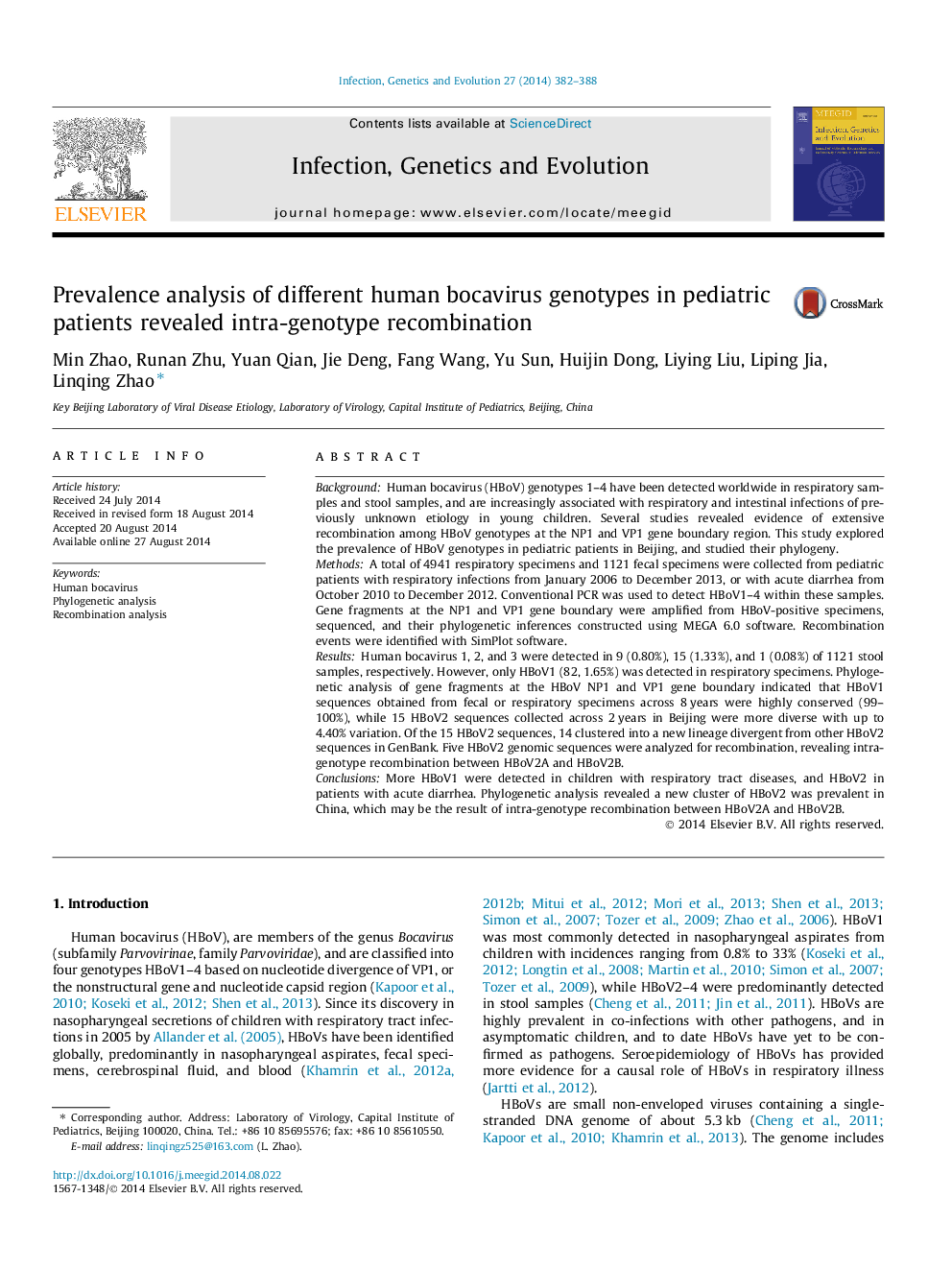| Article ID | Journal | Published Year | Pages | File Type |
|---|---|---|---|---|
| 5909792 | Infection, Genetics and Evolution | 2014 | 7 Pages |
â¢HBoV1-4 genetic diversity in juvenile acute gastroenteritis/respiratory infection was studied.â¢One lineage of HBoV1 is circulating these cases in China.â¢HBoV1 sequences detected over 8 consecutive years showed high conservation.â¢HBoV2 sequences revealed more diversity.â¢Most Chinese HBoV2 sequences resulted from recombination of HBoV2A and HBoV2B.
BackgroundHuman bocavirus (HBoV) genotypes 1-4 have been detected worldwide in respiratory samples and stool samples, and are increasingly associated with respiratory and intestinal infections of previously unknown etiology in young children. Several studies revealed evidence of extensive recombination among HBoV genotypes at the NP1 and VP1 gene boundary region. This study explored the prevalence of HBoV genotypes in pediatric patients in Beijing, and studied their phylogeny.MethodsA total of 4941 respiratory specimens and 1121 fecal specimens were collected from pediatric patients with respiratory infections from January 2006 to December 2013, or with acute diarrhea from October 2010 to December 2012. Conventional PCR was used to detect HBoV1-4 within these samples. Gene fragments at the NP1 and VP1 gene boundary were amplified from HBoV-positive specimens, sequenced, and their phylogenetic inferences constructed using MEGA 6.0 software. Recombination events were identified with SimPlot software.ResultsHuman bocavirus 1, 2, and 3 were detected in 9 (0.80%), 15 (1.33%), and 1 (0.08%) of 1121 stool samples, respectively. However, only HBoV1 (82, 1.65%) was detected in respiratory specimens. Phylogenetic analysis of gene fragments at the HBoV NP1 and VP1 gene boundary indicated that HBoV1 sequences obtained from fecal or respiratory specimens across 8Â years were highly conserved (99-100%), while 15 HBoV2 sequences collected across 2Â years in Beijing were more diverse with up to 4.40% variation. Of the 15 HBoV2 sequences, 14 clustered into a new lineage divergent from other HBoV2 sequences in GenBank. Five HBoV2 genomic sequences were analyzed for recombination, revealing intra-genotype recombination between HBoV2A and HBoV2B.ConclusionsMore HBoV1 were detected in children with respiratory tract diseases, and HBoV2 in patients with acute diarrhea. Phylogenetic analysis revealed a new cluster of HBoV2 was prevalent in China, which may be the result of intra-genotype recombination between HBoV2A and HBoV2B.
